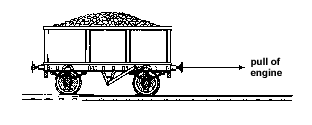
The Science SATs at Key Stage 3 consist of two tests, Papers 1 & 2. There are two different versions of Papers 1 & 2. Each version of the test has questions that meets the needs of pupils of different abilities:
Science Paper 1 & 2 for levels 3-6
Science Paper 1 & 2 for levels 5-7
Pupils are entered for a paper that is appropriate to their assessment levels. Pupils working below level 3 are assessed by the subject teacher only.
Papers 1 & 2
Each paper lasts an hour. Questions are based on the science work covered in biology, physics and chemistry. Pupils need to show that they can carry out experiments and investigate in a scientific manner and will be expected to understand and use the language of science in their answers.
Very able pupils may take a Science Extension paper to see if they can achieve level 8. This is a one-hour paper.
| Aluminium and tin-plated steel are used to make cans for food and soft drinks. The table below shows the pH values of some soft drinks and cooked foods.
(a) Cans were first used about 150 years ago to store food for soldiers. The cans were made from unplated steel. The soldiers found that beef kept in steel cans was still good to eat after many months. However they found that steel cans of rhubarb bulged, and when the cans of rhubarb were opened a gas escaped. | |||||||||||
| (I) Why were the steel cans not suitable for storing rhubarb? | |||||||||||
| (ii) Name the gas that formed in the cans of rhubarb | |||||||||||
 | |||||||||||
| a) A railway engine is being used to try to pull a wagon along a level track. The wagon's brakes are on, and the wagon does not move. | |||||||||||
| I) Draw one arrow on the diagram to show the direction of the force which prevents the wagon from moving. | |||||||||||
| ii) Is the force which prevents the wagon from moving greater than, equal to or less than the pull of the engine? |
